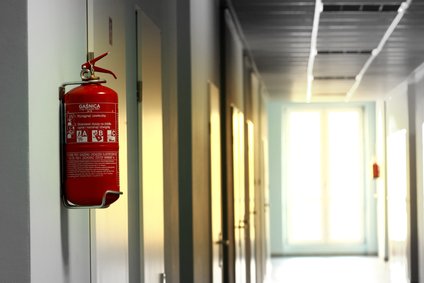

Failure to do so can give your employees the wrong message as it reflects to them that their well-being while at work is not always being considered and in some cases even have catastrophic effects in the event of an office fire.
Five tips on implementing fire safety in the work place within small businesses:
1. Appoint and train a fire safety officer
For small business with less than 20 employees it is essential that a minimum of one person in your business is fire safety trained. This individual should be well trusted and present on the premise most of the time during working hours.
Across the country many companies in the fire safety industry offer employee training to educate this individual further in this area. Once trained the individual should be appointed the fire safety officer for your business.
2. Educate all employees
After being trained the fire safety office should be given time with all employees to educate them about the correct procedures to follow in the event of a fire. Employees should also be trained to spot potential fire hazards and who they need to report these potential hazards too.
3. Have all required fire safety equipment in place
Fire alarms should be fitted throughout the building and tested by the appointed fire safety officer on a regular basis. In order to prevent fires from spreading further fire doors should be fitted throughout the building. However fire doors in the work place can prevent proper ventilation and be quite hazardous as employees may get figures trapped in them as they close automatically.
To overcome this issue Dorgards’ fitted throughout will allow doors to be open but in the event of a fire alarm sounding will automatically close. Fire extinguishers should also be fitted throughout but as different varieties of extinguishers are designed to tackle different types of fires a professional should be consulted to ensure the correct types of extinguishers are fitted.
4. Carry out regular checks
The fire safety officer should be checking all fire related equipment such as fire alarms, fire extinguishers and Dorgards’ on a regular basis (preferably weekly). During these checks potential fire hazards noticed should be raised and the correct actions to fix these hazards implemented.
5. Display safety signage throughout business premises
Throughout your premises signage relating to fire safety and procedures in the event of a fire should be displayed. For best practice:
- Fire extinguishers should have clear signs located near them with instructions on how to use in the event of a fire
- Fire exits from the building clearly mark with a ‘fire exit’ which will glow in the dark to not prohibit visibility in poor light
- Any fire doors not fitted with a system that closes when a fire alarm sounds should have a ‘Fire door keep shut’ sign attached to them
- Assembly points clearly marked away from the building
- Any fire alarms that can be sounded by an individual in the event of the fire clearly marked
- Finally one or more signs should be displayed in a prominently, outlining the correct procedure to follow in the event of a fire. A map of the premise should also be included underneath this sign clearly showing where all the fire safety related equipment mentioned above is located
Hopefully this blog has helped provide you with the some new knowledge to implement fire safety well within your business.
2023 Fire Safety eBook – Grab your free copy!
Download the Fire Safety in 2023 eBook, keeping you up to date with the biggest news and prosecution stories from around the industry. Chapters include important updates such as the Fire Safety (England) Regulations 2022 and an overview of the new British Standard for the digital management of fire safety information.
Plus, we explore the growing risks of lithium-ion battery fires and hear from experts in disability evacuation and social housing.